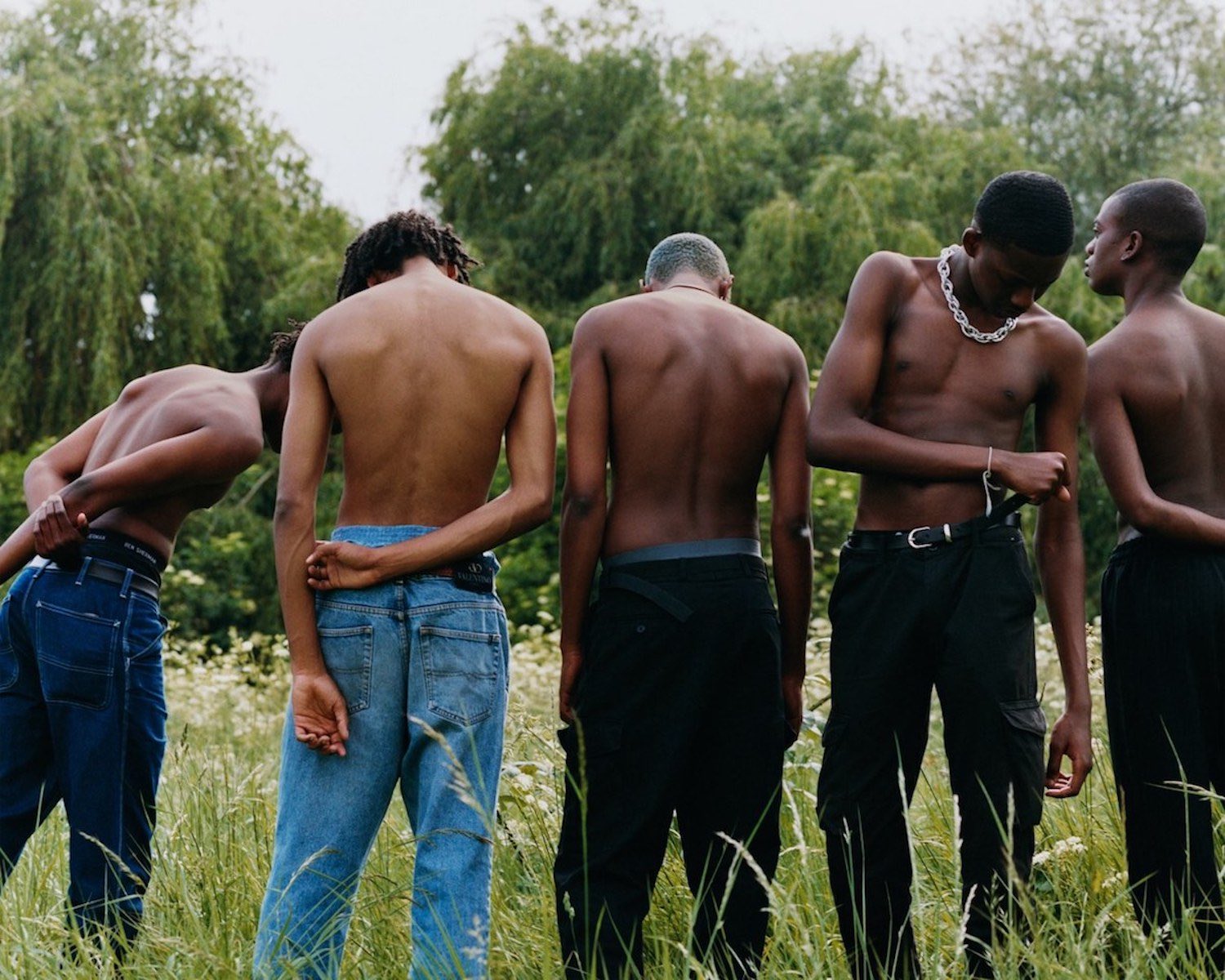The young visionary declares a black utopia in his first solo exhibition.

When you’re 24 and Beyoncé has you on speed-dial, there’s just about two options you can choose from: you may either retire, or let your ego fly up in the clouds. Tyler Mitchell is a 24-year-old who somehow doesn’t check these pre-packed boxes. The Atlanta-born photographer made fashion history as the first African American to capture Vogue America’s September cover—yes, that instantly iconic Beyoncé cornrow shot. His star-studded portfolio doesn’t start or end here, however; Anna Wintour, Spike Lee, Kendall Jenner, and a ton of other icons have all struck poses for him. Be it for the most major magazine editorial of the decade or for a never-to-be-published personal shoot with close friends, Tyler nevertheless always remains true to his urgent mission. To re-imagine the black experience, that is. With all this in mind, it seemed inevitable we share this past interview online; taken from his previous FOAM exhibition, Tyler is timeless, yet ever-changing and his words are as empowering today as they were yesteryear.
We encounter Tyler just three hours before his first solo exhibition—hosted by Foam Fotografiemuseum Amsterdam and titled I Can Make You Feel Good—opens to the public. “Within my work, locations are in conversation with the subjects I shoot”, he shares as we follow him through one of the museum’s immaculately white-painted corridors. In the room we find ourselves in, intimate photographs of his close friends are lined up alongside fashion editorial shots and Beyoncé’s Vogue cover image. Mitchell draws our attention to one particular piece, however. In it, two male subjects are in a warm recline as the lively street and bright sunshine engulfs them. The artist tells us that the subjects are, in fact, his dear friends, and that the shot was intentionally taken on NYC’s renowned Christopher Street. Drawing upon the city’s queer history, bodies in urban space and destabilized notions around masculinity, the artist presents a black utopia that takes optimism as a radical tool for re-imagining the future.
“I like pretty things, I’m drawn to colour and I like to look at the world from a positive perspective”, Tyler says as he takes us past the corridor and into the show’s main room. And indeed, once inside, an immediate sensation of colour, tenderness and pure aestheticism sweeps over us. In one image, a fashionable young man in a striking pink suit has his gaze fixed on the viewer, while two or three photographs down the wall, yet another stylish piece draws us in with its colourful palette, warm light and the subjects’ hopeful stare.

“The suburbs and the outdoors, in which I grew up in Georgia, and my time spent in Cuba, are two experiences that have helped me see a world outdoors for black people. I lived in Havana for a month, and I learned that it’s actually not intentional that the city is thoroughly painted in pastel colours. Because of the poverty in the country, people weren’t able to afford the most in-demand paint—white, black and navy—and hence they bought all these strange purples, pinks and turquoises, and that’s why Cuba looks the way it looks today. That’s a language I’m interested in, and so I guess this is how that palette gradually permeated all my work, both personal and commissioned.”
Standing in front of what he considers the centre piece of the exhibition, Tyler himself instantly acquires the glow that his work fills the exhibition space with. “This is, once again, a dear friend of mine from NYC—Tyra Mitchell—whom I also, funnily enough, share a name with, although we’re not related. She’s integral to this show, and my work, and I captured her in various moments throughout her pregnancy. This particular picture was shot at a place that has quite a vivid history of racial conflict in NYC. I wanted to capture a beautiful black family unit; an all-American family portrait that has a healthily functioning black couple as its focal point.”

Unique to I Can Make You Feel Good are also two films—Idyllic Space and Chasing Pink, Found Red—which are shown to the public for the first time in Tyler’s career. Educated in film at NYU, the artist utilizes the moving image medium in a similarly optimist manner to his photography work. To witness Idyllic Space, the viewer is invited to lie down on the floor beneath a white ceiling on which the short film is projected. In it, black youths skateboard, swing and hula-hoop, as Tyler’s camera explores a sense of play and freedom for the next generation of African diaspora. “Historically, black people were not captured from below in cinema, so as not to appear heroic—you can see that in films like Birth of a Nation. I wanted to reverse that and create this relaxing effect where you’re lying down, where the images are washing over you,” he recently told Vogue.
For Chasing Pink, Found Red, Tyler filmed a bunch of friends lying around for an afternoon picnic in Central Park. As the camera pans over them, a voice-over narrates numerous stories of instances when black folks were made to feel less because of the colour of their skin. Crowdsourced by the artist himself—Tyler simply asked friends, relatives and Instagram followers to send him voice memos of their personal experiences of racial injustice—the narration’s purity blends with the video’s tender representation of each individual. And in what we can definitely call a historic moment at a historic exhibition opening, a humble but acutely self-aware young artist envisions and affirms a black experience that is sensitive, effortlessly expressive and ultimately free in its purity.